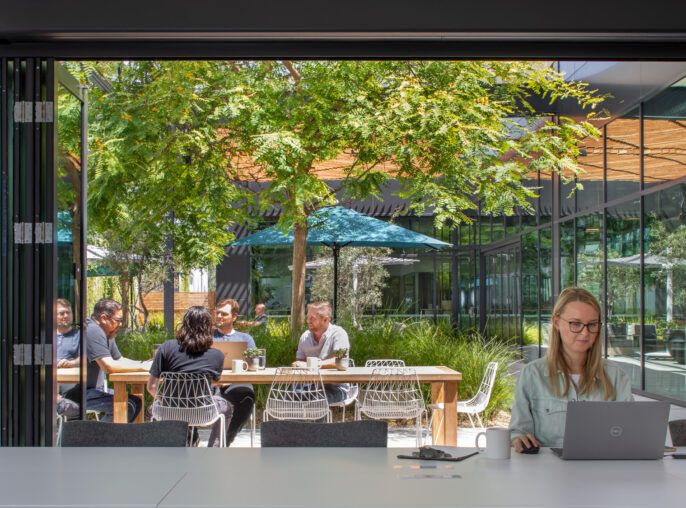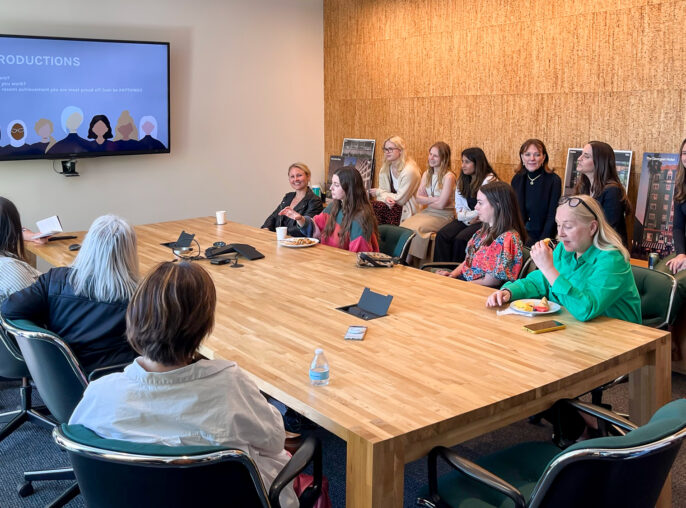Insight
From Coffee to Collaboration: The Work Café Redefined – Ark Research Lab
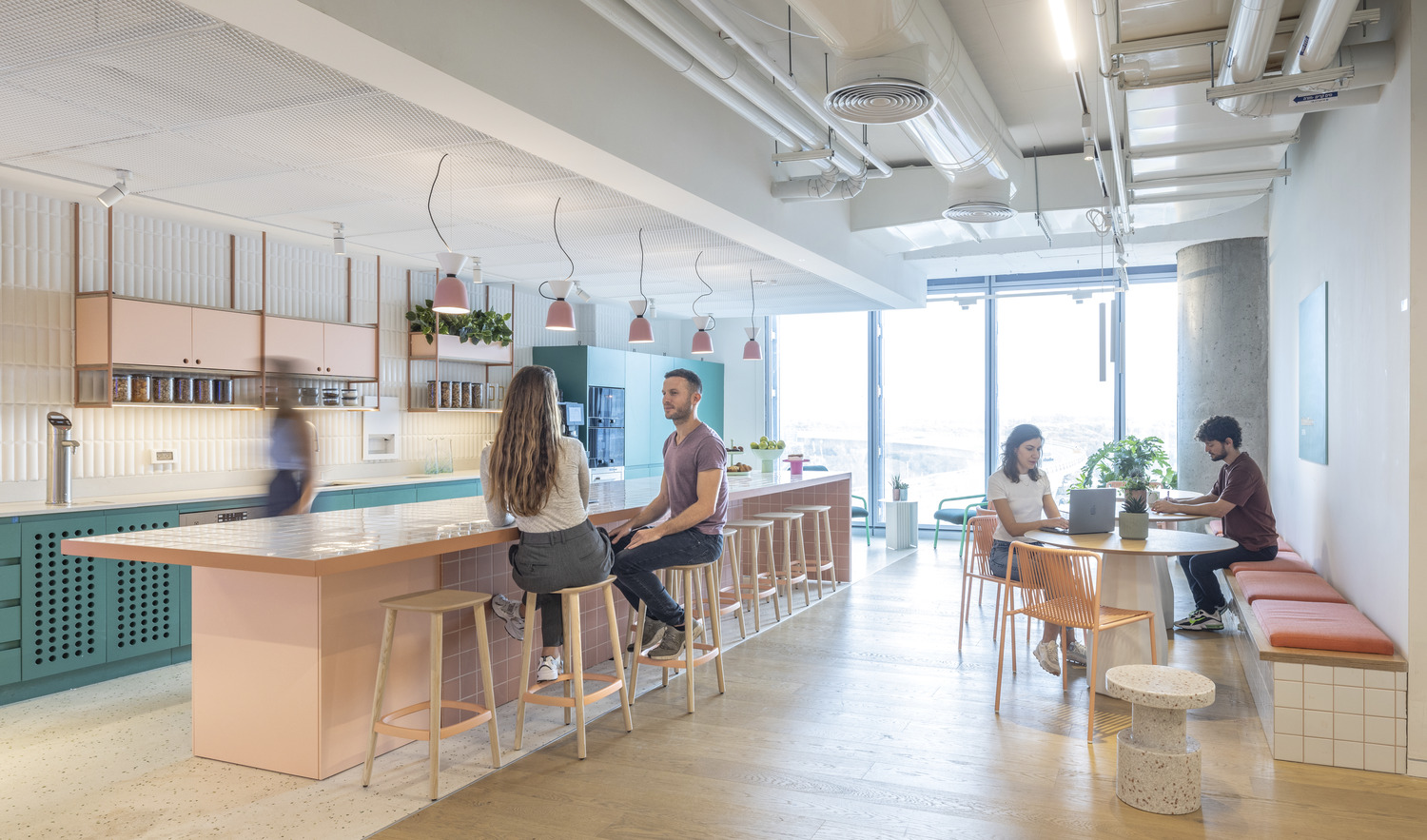
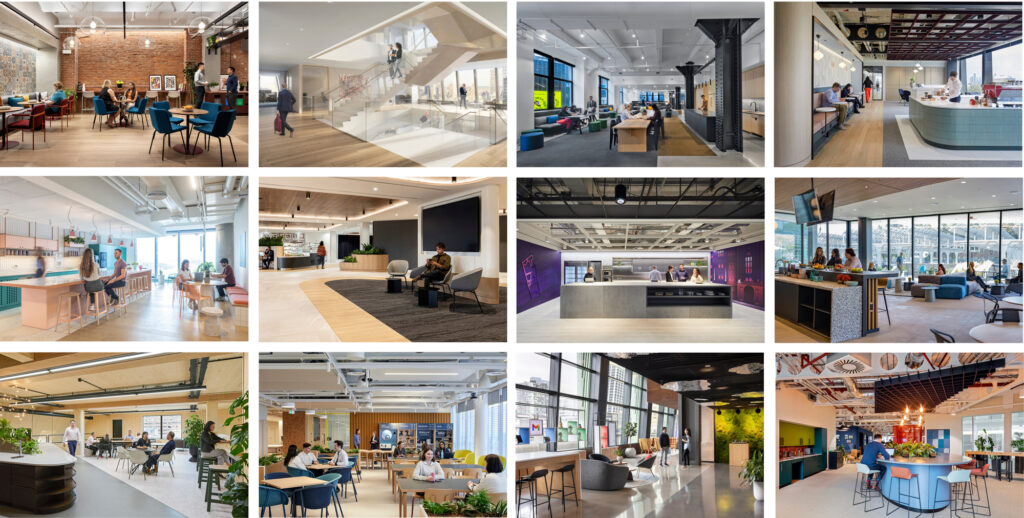
Image: Ark completed an in-depth study of 12 Work Cafés
As workplace strategists at Ark and HLW, our conversations with clients focus on company goals and aspirations, and how we can use office space to bring them to life. With hybrid working firmly in place, we frequently hear clients say, “We want to create a vibrant work experience,” “We want to bring energy back to the office,” and “We want people to get to know their colleagues.” Social spaces, such as the work café, are viewed as indispensable amenities to get the job done.
More than seven in ten employees see lunch areas with seating as the most important workplace amenity. (HLW Benchmark Survey Data, 2023)
But do work cafés do what we hope they do? And what makes some more successful than others? To answer these questions, we analyzed a dozen work cafés designed by HLW, reviewed post-occupancy employee feedback, and conducted a utilization study of a New York office work café using sensor technology and in person observation.
What we found is the most successful work cafés do three things well: They draw people in, they level the playing field, and they never run empty.
A Successful Work Café Draws People In
Location, Location, Location
Getting the location right for your work café is key. As hybrid work is shifting office priorities towards socializing and connecting, consider placing your work café in premium parts of the building—think close to reception, with spacious surroundings, and spaces imbued with natural light.
You want your staff to greet each other as they are getting their daily caffeine fix. Think about the activities that might coincide with that morning cup of coffee (e.g., entering the office, putting lunch in the fridge, toasting a bagel) and co-locate these activities. Our observation study found these morning habits become a real connection point for employees.
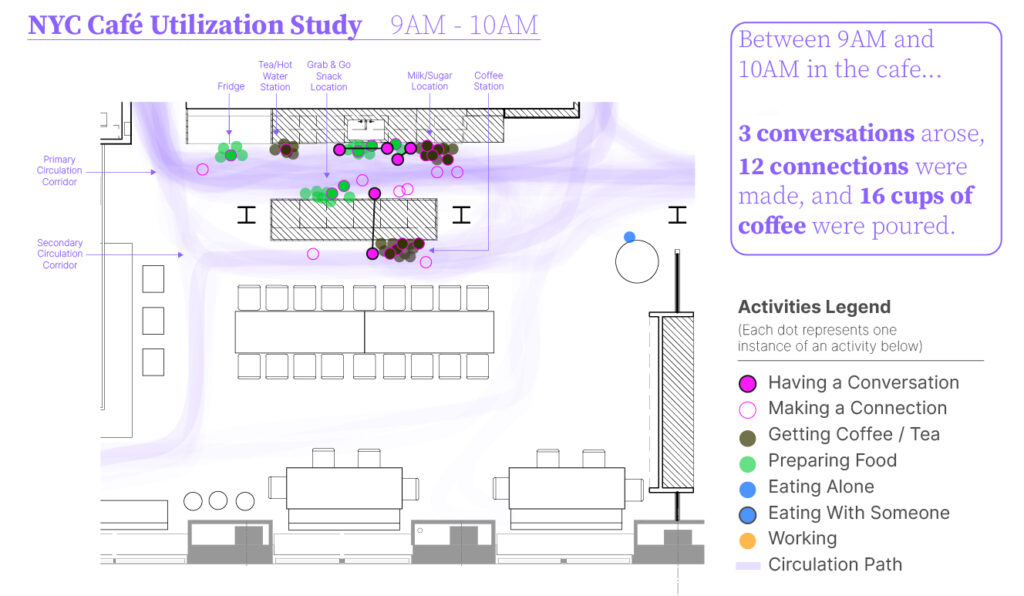 If your work café is already fixed, consider the areas, amenities, and teams surrounding it. Which teams are energetic and vibrant, and use the café for more than just lunch? Which teams are more concerned with convenience and will only use it if it is close by? Can you rightsize office coffee points to create a draw to your work café? Understanding how your people and your space work is critical to planning and adjusting those adjacencies.
If your work café is already fixed, consider the areas, amenities, and teams surrounding it. Which teams are energetic and vibrant, and use the café for more than just lunch? Which teams are more concerned with convenience and will only use it if it is close by? Can you rightsize office coffee points to create a draw to your work café? Understanding how your people and your space work is critical to planning and adjusting those adjacencies.

This confidential insurance client moved their work café from a tucked away corner space to a higher floor close to the reception and entry areas, connected to working floors via a staircase. Post occupancy study showed a high degree of space use throughout the day, with employees using the café to meet, work, and chat.
Be Strategic with Food and Drink Offerings
If your work café is already fixed, consider the areas, amenities, and teams surrounding it. Which teams are energetic and vibrant, and use the café for more than just lunch? Which teams are more concerned with convenience and will only use it if it is close by? Can you rightsize office coffee points to create a draw to your work café? Understanding how your people and your space work is critical to planning and adjusting those adjacencies.
“I know this sounds horrible, but I find myself a little jaded about the lunches we have. The other day I saw the offering and thought, ‘Ugh, salmon again?” – Tech Employee Survey Response
“We used to have food brought in for a weekly lunch and it was really well attended. It helped make us feel really connected as a group.” – Finance Employee Survey Response
A Successful Work Café Levels the Playing Field
Office environments often come with inherent associations and restrictions on how to interact, especially between senior and junior–level staff, which can prevent employees from bringing their full selves to work.
Work cafés present an excellent opportunity to create a more casual atmosphere, allowing for informal and organic connections between teams, roles, and generations. The work café is not a desk for focus work, nor a conference room for formal meetings. It’s a third place, within the workplace but not strictly about work.
A Third Place
Successful cafés function as a third place by creating a degree of separation from the working floor, both physically and through aesthetics and branding. We noticed this most clearly when comparing a post-occupancy study of two cafés, one more formal and the other much more casual. The more formal café, while very high end, did not encourage people to linger, while the more comfortable environment was so well liked it became a popular workspace as well.
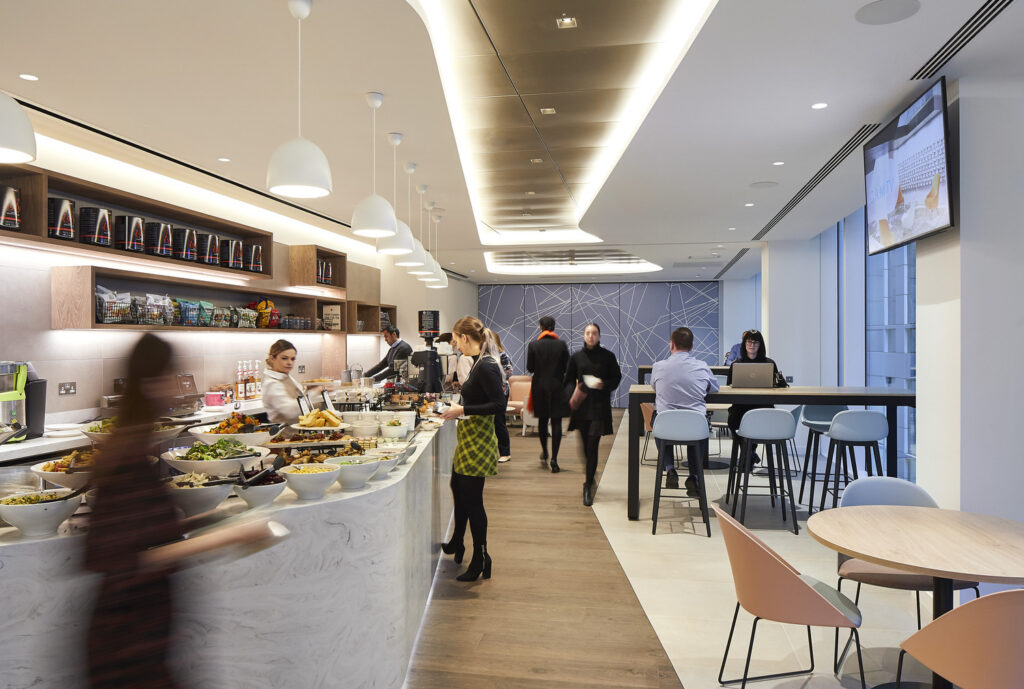
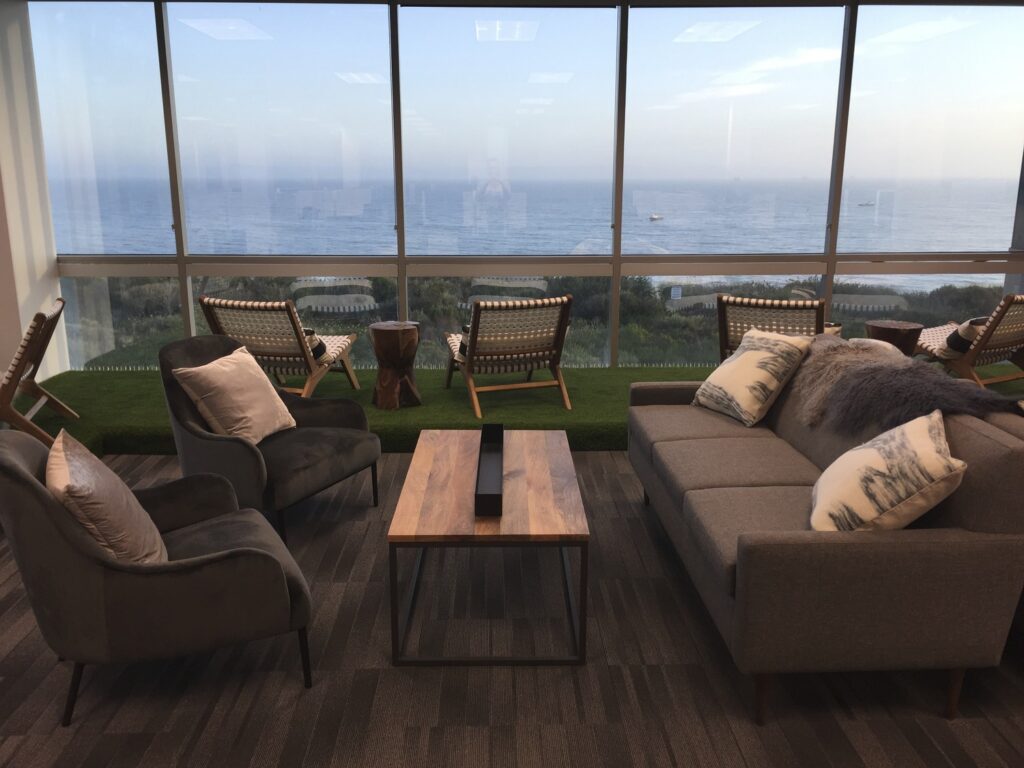
Top dislikes: Bar blocks views.
Survey feedback: “Amazing space. It’s so nice to get away from my desk and sit here.”
“I love all of this; it’s inviting, comfortable and encourages both collaboration and individual focus.”
Playing with your design aesthetic to reflect a more casual and relaxed version of the rest of your office can signal to employees that a slightly different set of social norms is acceptable here. A range of softer seating areas, with books or magazines, adds comfort and agency.

This media client used ample lighting, soft furnishings, and books and magazines to create a space in which people want to linger. This lounge area serves as an alternative to more traditional café seating, providing a space for meeting, chatting, and eating.
A Third Person
Our utilization study highlighted one person who engaged and kick-started significantly more conversations than anyone else: the community manager.
Of course, part of their responsibility is to make sure the coffee is brewed and the snack trays are filled, so time spent in the café is much greater. But the data showed that having a community manager to greet staff and get conversations started helps increase interactions and connections. Acting as a third person and intermediary, their presence has a direct impact on work café vibrancy.
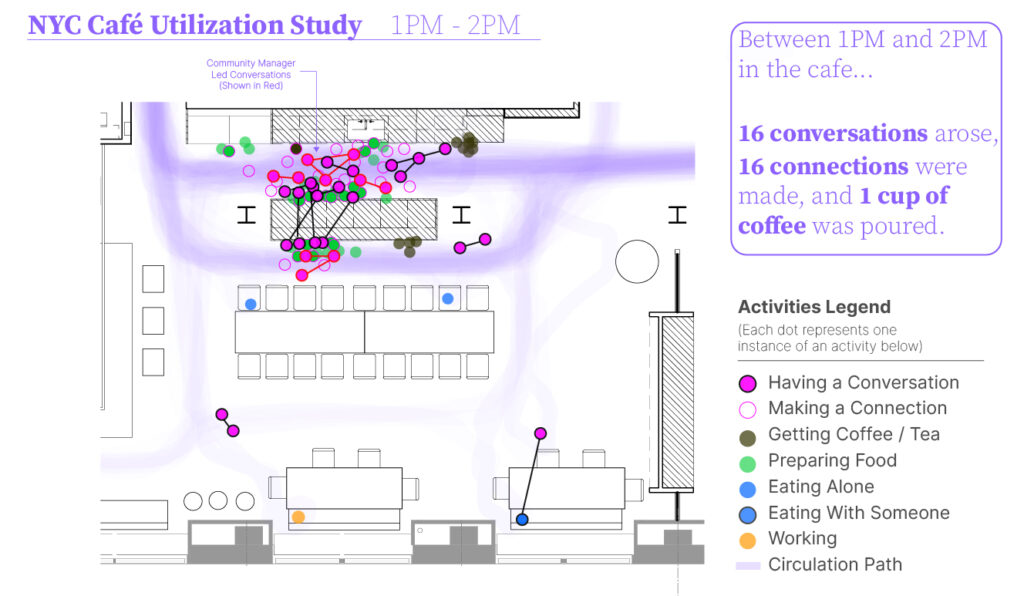
Between one and two PM there were sixteen conversations, four of which were initiated by the community manager. And of those four, two expanded to include a third person.
Imbued with Inclusivity
Another way to level the playing field is to consider your employees’ differing needs and cater to them through variety and inclusive settings. Not everyone wants to go into the café and have a conversation, the introverts among your staff may dread it! While you are designing a social space, it must cater to all personality types, otherwise it is not going to be used to its fullest potential.
Not everyone will be outgoing enough to start a conversation with a stranger, even if it is a coworker, and providing spaces for solo use will be necessary. That does not mean adding single seats—in fact, the utilization study showed that everyone who ate on their own in the café chose a seat that was not geared toward single occupant use. It’s as if the single seats were seen as ‘antisocial spots’ and avoided.
“I like going to the work café to do heads down work without being interrupted or asked questions at my desk.” – Finance Employee Survey Response
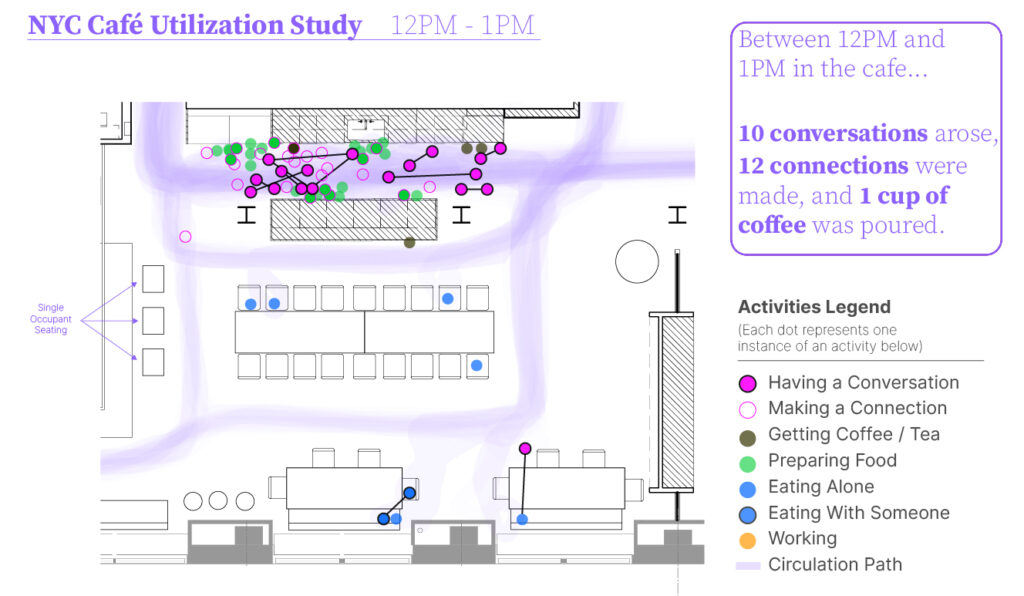
Single occupants still prefer to eat at the larger table and avoided the single occupant seats.
Consider two-person booths that allow for comfortable solo eating and working with visual and acoustic privacy, while still providing the ability to overhear conversations and join in, or have people stop by and say hello.

A Successful Work Cafe Never Runs Empty
No one wants to sit in an empty, dead space, and the work café is no exception. During the morning coffee rush and lunch breaks, activity comes easy, but in the off times it is important to have strategies in place to keep the energy alive.
Activities and Events
To really maximize the value of your work café, consider it to be a modern-day village green—a freeform, flexible space to bring initiatives to life, host community events, and facilitate larger team gatherings.
Flexible layouts, movable furniture, and good audio-visual equipment are important for high quality events to be successful. We have collaborated with clients to develop event playbooks, with floorplan sketches showing how the work café can be reconfigured to easily suit several types of events.
As important as the physical space is, effective communication and curation of events is critical for driving attendance. A detailed events calendar, virtual displays, event descriptions, and multiple reminders to staff, are key to driving attendance.
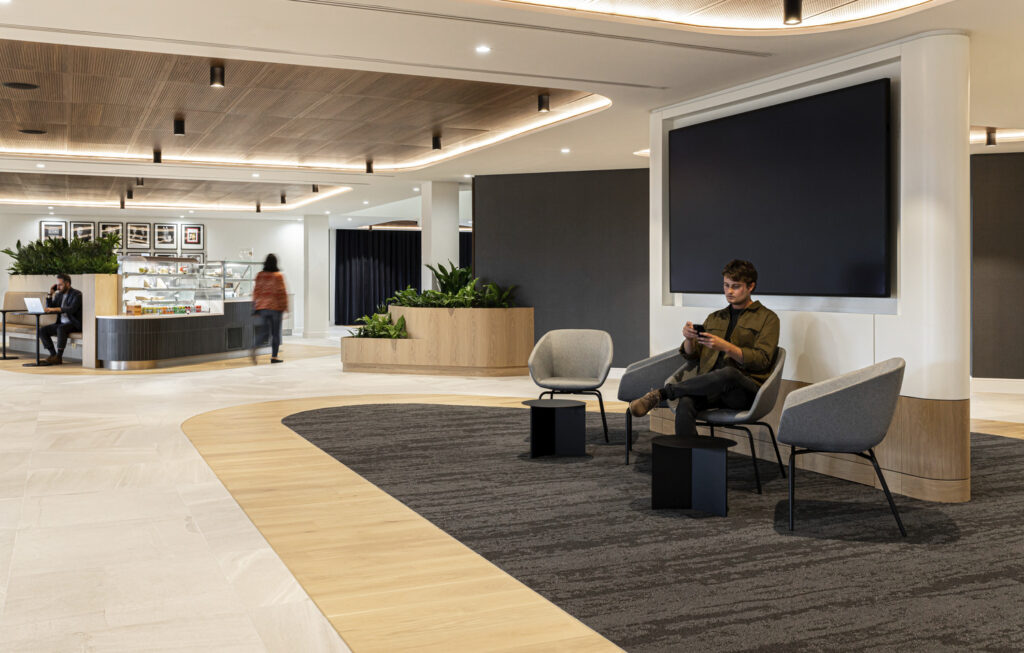
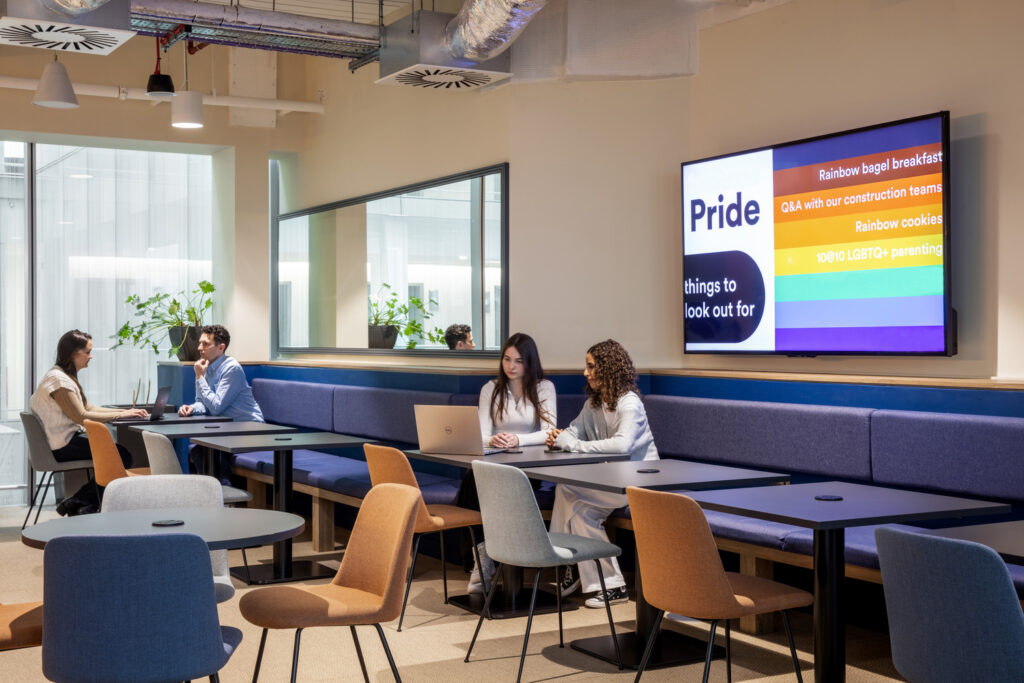
Integrated Programming
Filling your work café with vibrancy and energy comes down to rightsizing the space for your employees’ ways of working—consider days spent onsite when planning for the size of your café, and if in doubt, go smaller. Calculate for standing, not seating, space and provide flexible walls to adjoining meeting space to cater to all-staff town halls and large-scale events, while maintaining a smaller footprint.
During non-rush times the café can function as a great alternative meeting place. But if you only have rows of open tables this might not be true. An enclosed, or semi-enclosed, area of the cafe that offers visual and acoustic privacy can accommodate a variety of meeting types, particularly if it has the right kind of technology—think screens and outlets to plug in a laptop or phone. We are increasingly working semi-enclosed meeting areas into plans, and they work great as a café adjacent space.

If you’re looking for the café to be a successful meeting place, it’s important to know the ratio of meeting spaces you have planned compared to expected headcount, and make sure the café is included in that calculation. This includes thinking about the types of meetings you have, as well as how many, since the café is better suited to more casual meetings. This is something Ark has been programming in greater detail than ever before, otherwise you risk over allocating space which can drive down utilization.
Final Thoughts
For Ark, performing this study was an opportunity to bring into focus the ideas we have seen percolating through our client conversations and observations. There is a lot of trust and expectation placed on spaces supporting socializing and connection to draw employees back to the workplace–but as our study shows, it’s more complicated than simply adding lounge seating and great coffee.
Understanding your workforce is the most critical step in designing a high functioning work café. Who they are, what drives them, and how they connect, will always dictate the best design approach.
The Ark Research Lab solves workplace pain points for our clients across industries, using nuance and data to help you stay more agile, smarter and ahead of your competitors. Learn more on Ark Strategy (workwithark.com)
